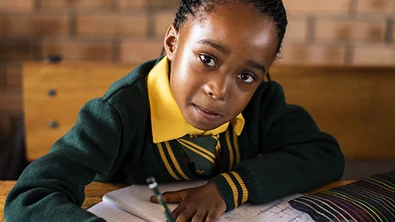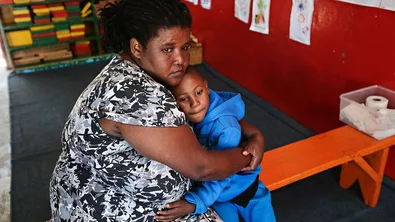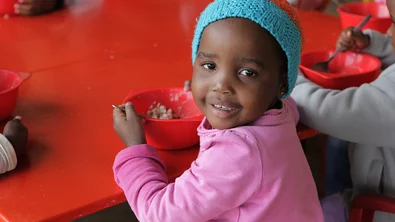SCSA recognizes that the realisation of children’s rights in South Africa depends on having a strong, national child rights governance system that delivers ALL rights, for ALL children in ALL contexts. As a result, SCSA recognises that Child Rights Governance (CRG) is foundational to the implementation of State obligations to the United Nations Convention on the Right of the Child (UNCRC), Africa Charter on the Right of the Child (ACRWC), the Constition of South Africa and the Sustainable Development Goals (SDGs).
The three key focus areas of CRG are:
The three key focus areas of CRG are:
- Strengthen capacity of government officials to deliver on their mandate,
- Mobilize, organise and coordinate civil society to hold government accountable for its obligations and
- Enhance the capacity of children on their rights, create platforms for them to have their voices heard on matters that affect them and support child led initiatives.
A total of 1 239 children and 722 adults have been reached in advancing the child rights agenda in South Africa. The programme focusess on strengthening participation and coordination in the children’s sector through supporting the SANCRC. Capacity building of child right networks, the business sector and local municipalities presented the child rights lens while also developing children’s capacity to influence decisions that affect them.
The formation and operation of SANCRC was a great achievement and a proud moment for Save the Children South Africa and the sector and the coalition has made important strides in claiming its space as a body that advances advocates for the delivery of children’s rights in South Africa. The SANCRC officially launched and adopted its constitution, a broad strategy and specific thematic strategies.
A new steering committee was elected including five child representatives. The SANCRC have 123 organisations that signed up as members. Save the Children South Africa was reconfirmed as the Secretariat of the coalition. Successes included:
1. the unqualified acceptance of the UN Committee on the Right of the Child of the List of Issues Prior to Reporting (LoIPR) submitted by the coalition and produced with children; and
2. the recognition by the National Treasury that it should get input from the coalition on some of the child rights policy and budgeting imperatives. Another win was the re-establishment of the Office of the Rights of the Child within provinces, of which eight were constituted. The biggest challenge that the coalition currently faces is resourcing its well-thought-out advocacy agenda across all its working groups. Without resources, there is a risk that CSO space will shrink and that critical progress made will be reversed.
Six municipalities received training on mainstreaming children’s rights. The Metropolitan Cities of Ekurhuleni and Johannesburg launched child rights situational analysis to inform their operations. Platforms were created for children to lobby and advocate for better service delivery. In 2020 children in the Makhado Municipality gave input to the municipality’s planning advocating for more street lights and a sporting complex. In 2021 the Municipality delivered on its commitments and senior managers in the municipality acknowledged in a meeting with the Save the Children South Africa team that to a great extent this was a result of children in our networks constantly following up on submissions. A key challenge is how children in the networks will be supported going forward. More resources should be mobilised to continue supporting both current and new networks, culminating in modelling a child-led organisation.
Together with children, we conceptualised the idea of creating an alumni group of children. Alumni are youth over the age of 18 who have completed their high school education and who had been part of previous projects and gained the knowledge and skills to advocate for child rights. In 2021, alumni were drawn on to share their skills and experience and to guide new child recruits who were part of a one-year grant from the Royal Danish Embassy in South Africa which supports children who aspire to be Human Rights Defenders. We learned both that children collaborating with adults are able to conceptualise programmes and projects and that children are able to then lead these initiatives. An example of this was how children led the Alex FM radio programme called Amplifiers.
The formation and operation of SANCRC was a great achievement and a proud moment for Save the Children South Africa and the sector and the coalition has made important strides in claiming its space as a body that advances advocates for the delivery of children’s rights in South Africa. The SANCRC officially launched and adopted its constitution, a broad strategy and specific thematic strategies.
A new steering committee was elected including five child representatives. The SANCRC have 123 organisations that signed up as members. Save the Children South Africa was reconfirmed as the Secretariat of the coalition. Successes included:
1. the unqualified acceptance of the UN Committee on the Right of the Child of the List of Issues Prior to Reporting (LoIPR) submitted by the coalition and produced with children; and
2. the recognition by the National Treasury that it should get input from the coalition on some of the child rights policy and budgeting imperatives. Another win was the re-establishment of the Office of the Rights of the Child within provinces, of which eight were constituted. The biggest challenge that the coalition currently faces is resourcing its well-thought-out advocacy agenda across all its working groups. Without resources, there is a risk that CSO space will shrink and that critical progress made will be reversed.
Six municipalities received training on mainstreaming children’s rights. The Metropolitan Cities of Ekurhuleni and Johannesburg launched child rights situational analysis to inform their operations. Platforms were created for children to lobby and advocate for better service delivery. In 2020 children in the Makhado Municipality gave input to the municipality’s planning advocating for more street lights and a sporting complex. In 2021 the Municipality delivered on its commitments and senior managers in the municipality acknowledged in a meeting with the Save the Children South Africa team that to a great extent this was a result of children in our networks constantly following up on submissions. A key challenge is how children in the networks will be supported going forward. More resources should be mobilised to continue supporting both current and new networks, culminating in modelling a child-led organisation.
Together with children, we conceptualised the idea of creating an alumni group of children. Alumni are youth over the age of 18 who have completed their high school education and who had been part of previous projects and gained the knowledge and skills to advocate for child rights. In 2021, alumni were drawn on to share their skills and experience and to guide new child recruits who were part of a one-year grant from the Royal Danish Embassy in South Africa which supports children who aspire to be Human Rights Defenders. We learned both that children collaborating with adults are able to conceptualise programmes and projects and that children are able to then lead these initiatives. An example of this was how children led the Alex FM radio programme called Amplifiers.
Also in this section
Child Protection
Our Goal: To strengthen the capacity of duty bearers through scaling up violence-prevention programmes in 13 districts.
Health and Nutrition
Our Goal: To support the provision of gender-sensitive comprehensive sexuality education (CSE) to 80 000 children, adolescents and young people (CAYP) in 10 districts through strengthened partnerships with local CSOs and government contributing to the reduction of teenage pregnancy and HIV.




